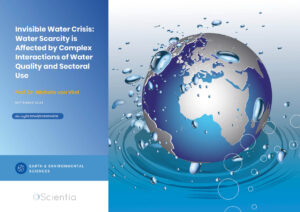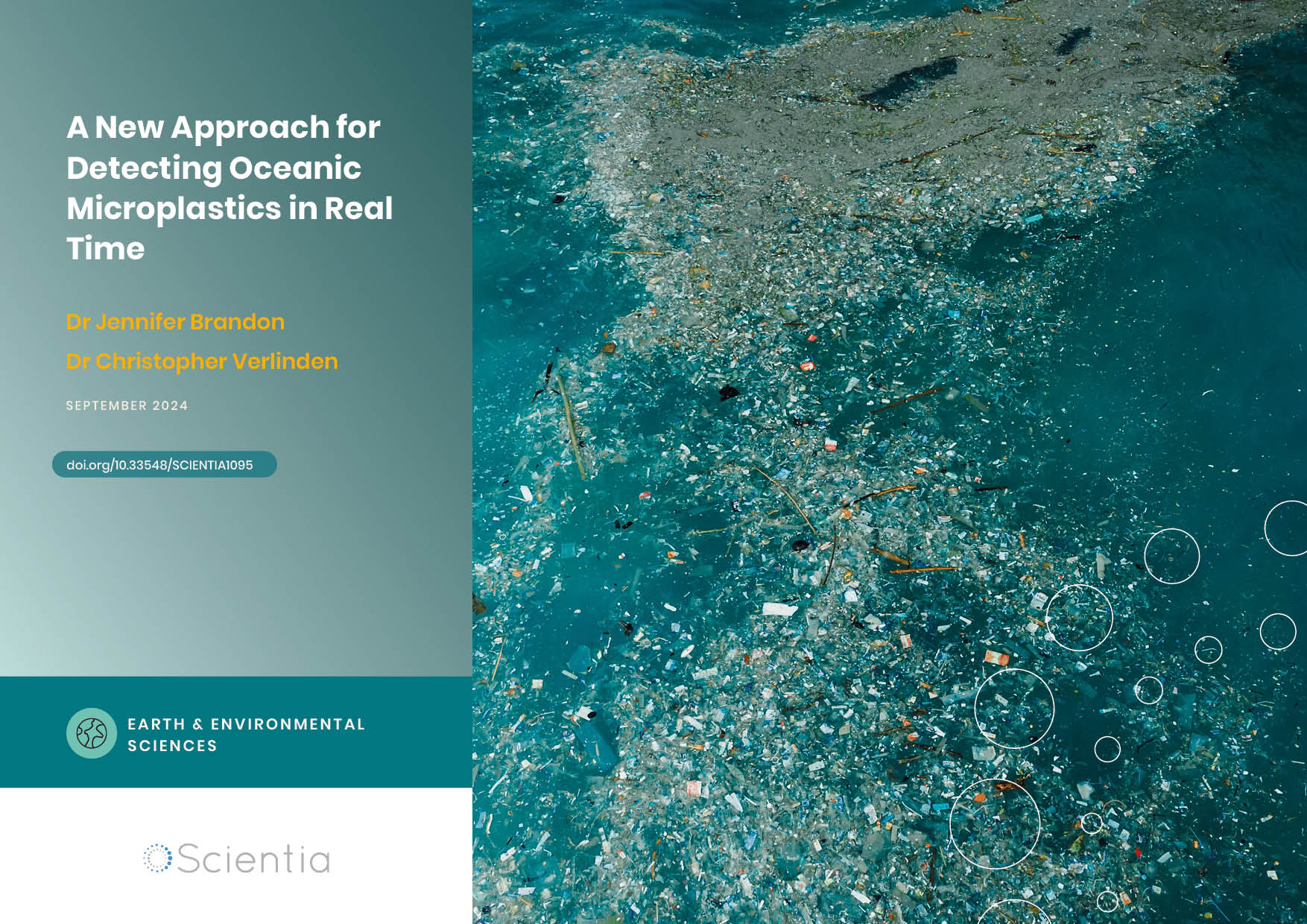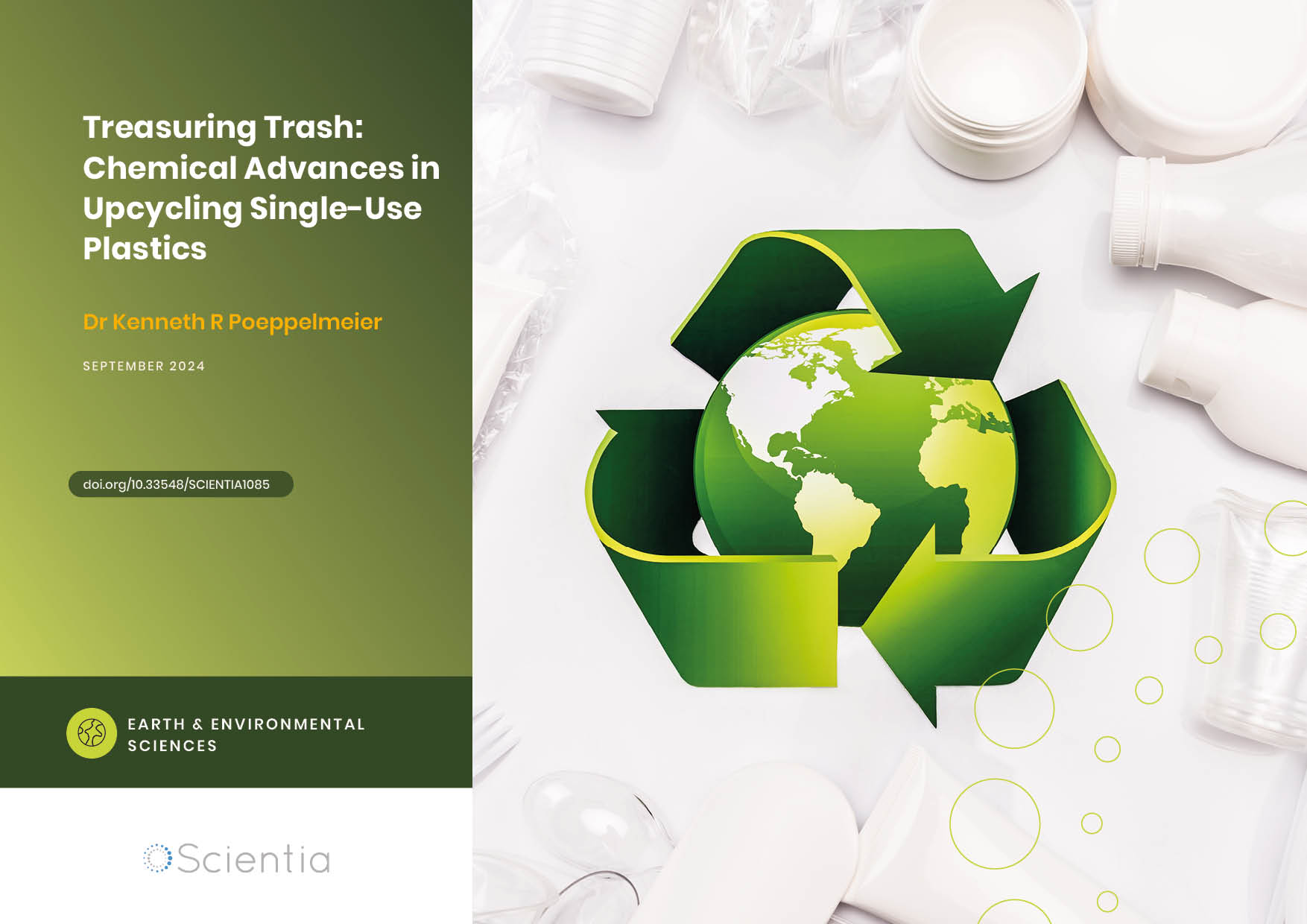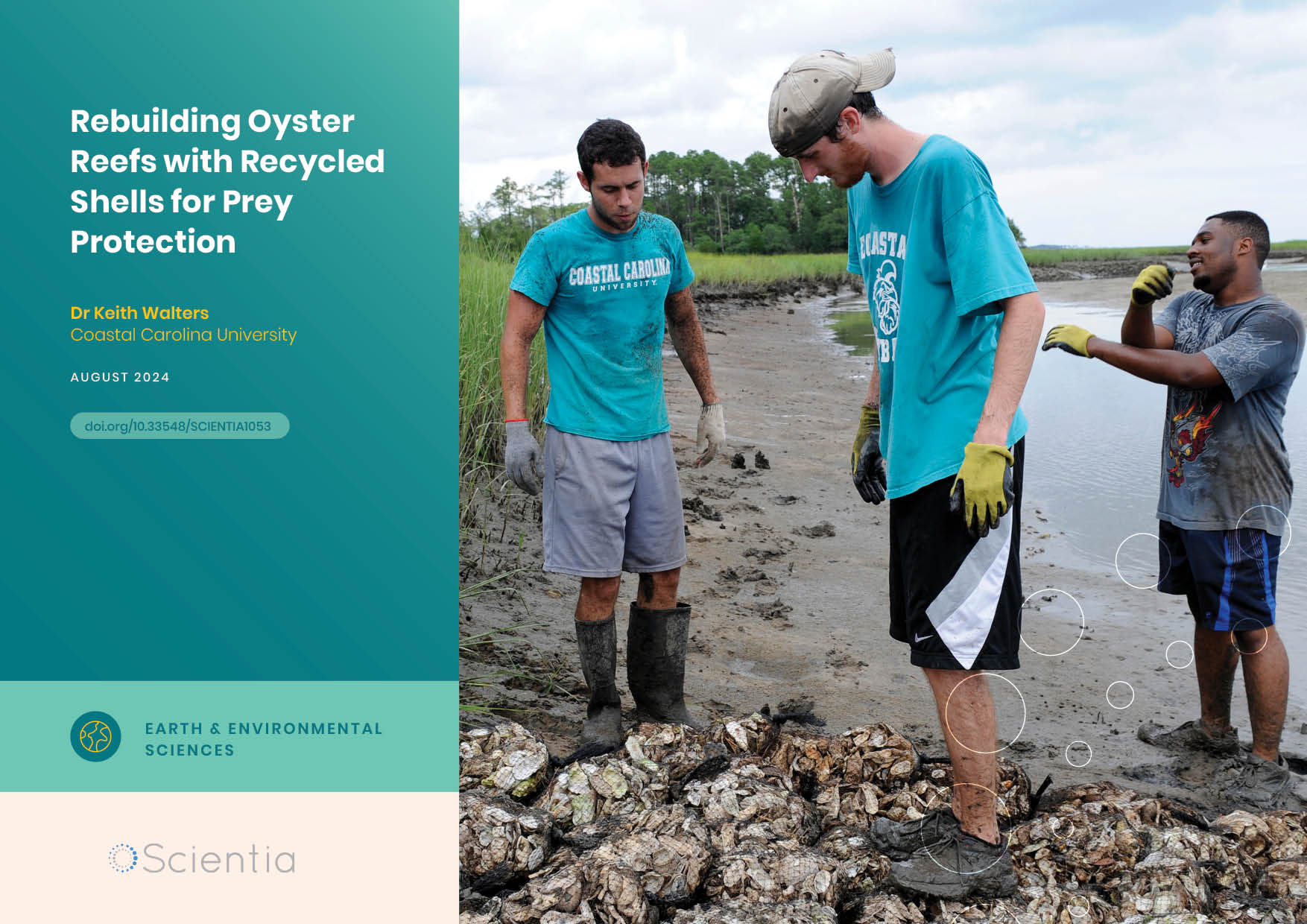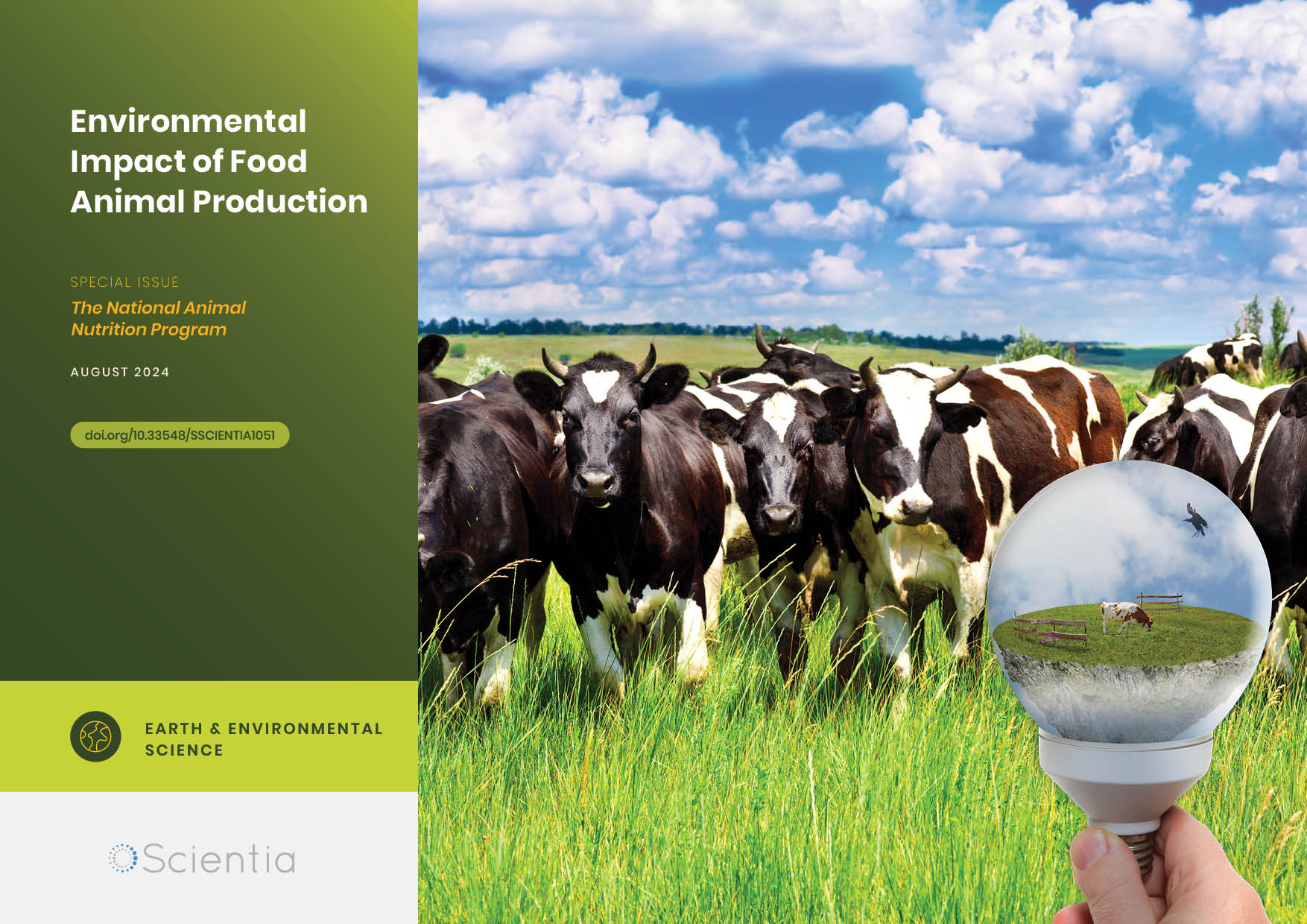Prof. Dr. Michelle van Vliet | Invisible Water Crisis: Water Scarcity is Affected by Complex Interactions of Water Quality and Sectoral Use
Sufficient water of good quality is vital for humankind and nature. A growing global population increases the demand for water of suitable quality. In addition, climate change and increases in extreme weather events, such as droughts and heatwaves, directly affect the availability, quality, and use of water. These three factors – availability, quality, and use – interact in complex ways. Prof. Dr. Michelle van Vliet at Utrecht University is pioneering our understanding of the drivers of clean water scarcity under global change and proposing solutions to this. With her team, she focuses on the challenge of ensuring sufficient water of suitable quality to meet human demands and ensuring healthy ecosystems in our changing world.
Clean Water Scarcity under Global Change
A growing global population increases the demand for water of suitable quality. This is needed for different sectors, such as domestic and industrial uses, as well as agriculture. Furthermore, healthy ecosystems also strongly rely on sufficient water of good quality. Climate change and extreme weather events (such as droughts, heatwaves, rainstorms, and floods) pose serious challenges for water management in terms of both water resource availability and water quality. Prof. Dr. Michelle van Vliet at Utrecht University in The Netherlands examines how changes in climate and socioeconomic systems impact water resources in terms of quality, availability, and use. Her research is critical to our understanding of clean water scarcity and to informing strategies on how best to manage this precious resource.
Droughts and heatwaves amplify water scarcity across the globe, with their impacts reverberating through economies and communities. Younger generations now face more frequent extreme weather events, such as droughts and heatwaves, and this will continue to have a profound impact on their exposure to water scarcity, their lives and livelihoods. Hence, there is a pressing need to improve our water management to alleviate clean water scarcity and reduce the number of people affected by this.
Driving Forces Behind Clean Water Scarcity
Traditionally, studies have assessed water scarcity based solely on quantity, but there is much more to this issue: water’s usability for different purposes is also dependent on its quality. So, it’s not just about having sufficient water availability; it’s about having the right quality of water, too.
Decreasing water availability, worsening of water quality, and increasing water use from sectors all contribute to increasing water scarcity. Prof. Dr. Van Vliet explains that each of these three components individually contributes to water scarcity but also together due to important interactions. These interactions are further impacted by droughts and heatwaves. Lower water availability during these extreme events increases water scarcity not only directly but also indirectly. For instance, decreasing water availability also results in the degradation of surface water quality due to the reduced capacity of rivers to dilute pollutants.
This deterioration in water quality can then exacerbate water scarcity further, as water sources may then not be suitable for a particular use (e.g., when salinity levels are too high for irrigating crops). During these extreme weather events, water demands in specific sectors (such as households and agriculture) rise. This directly contributes to greater water scarcity from a water quantity standpoint but also affects wastewater flows and water quality.
Sectors that are water-dependent rely on clean water but also contribute to water pollution. For instance, elevated freshwater salinity levels during droughts severely limit irrigation water use, yet irrigation has been demonstrated to be the main human driver of freshwater salinisation of river systems globally. In addition, high concentrations of pathogens, pharmaceuticals, organic pollution and various other pollutants adversely affect the domestic use of water, particularly when (waste)water treatment levels and capacities are low, but the domestic sector is also the major source for most of these pollutants. Both global and regional studies have demonstrated that present and future water scarcity is strongly driven by water-quality issues, particularly in water scarcity hotspots in the Global South, such as in Southeast Asia and sub-Saharan Africa.
Prof. Dr. Van Vliet believes that finding sustainable solutions for managing water resources requires more than just understanding these driving factors; it also requires an understanding of how these factors interplay. We need smart tools to unravel the driving forces of water scarcity, considering the interplay of water availability, quality and the different users. Such tools would enable the implementation of effective water management strategies and mitigate against clean water scarcity.

Water Quality and Water Use: An Integrated Framework
Prof. Dr. Van Vliet argues that to improve our understanding of clean water scarcity and its driving factors under extreme weather conditions (such as drought and heatwaves), we need to develop integrated water assessment frameworks. These would allow us to fully account for how much water we have, how we use it, and its quality. Such a framework would help us to obtain more realistic estimates of present and future gaps between the demands versus supply of clean water resources. Thanks to advancing technologies in supercomputing, we can now simulate trends and spatial patterns of water resources in more detail in space and time at the global scale, looking at the availability, quality and use of water resources. These advancements in modelling enable us to consider water quality impacts and how they interact with various sectors using water, on local to global scales and from previous decades to the end of this century.
Solutions for Clean Water Scarcity
Traditionally, efforts to alleviate water scarcity have focused on increasing freshwater availability and enhancing water-use efficiency. Prof. Dr. Van Vliet believes that next to these strategies, a stronger shift should be made toward considering water quality improvements. This involves reducing pollutant emissions and expanding wastewater treatment and reuse amongst sectors.
Understanding how water quality, availability, and use by various sectors interact is crucial. By doing so, we can explore synergistic combinations of solutions for regions affected by clean water scarcity worldwide. Further studies are needed to look more closely at the interactions of water use by various sectors with surface/groundwater availability and quality.
As we navigate the challenges of a growing global population, changing climate and more extreme weather events, Prof. Dr. van Vliet’s work emphasises the importance of understanding the intricate relationship between water quality, water use, and their impact on water scarcity, especially during droughts and heatwaves. She provides a convincing argument that our focus should be on developing innovative tools and advanced model frameworks to study these interrelations and evaluate clean water solution options. A strong focus on sustainable water management strategies, driven by both water quantity and quality improvements, is needed to ensure the provision of clean water to our future generations.
SHARE
DOWNLOAD E-BOOK
REFERENCE
https://doi.org/10.33548/SCIENTIA1058
MEET THE RESEARCHER

Prof. Dr. Michelle van Vliet
Department of Physical Geography
Faculty of Geosciences
Utrecht University
Utrecht
The Netherlands
Prof. Dr. Michelle van Vliet is Professor of Water Quality and Sustainable Water Systems at Utrecht University. She focuses with her team on the key challenge of ensuring sufficient water of suitable quality for meeting human demands and healthy ecosystems in the face of climate and socio-economic changes. She contributes to this by studying the complex interactions between water resources quality, availability, and use by sectoral sectors, including energy and agricultural production. She completed her doctoral research with distinction in 2012 at Wageningen University, resulting in several high-profile publications and the National Award for Best PhD Thesis in Environmental Sciences. She was awarded a Niels Stensen Fellowship, which allowed her to explore the vulnerability of thermoelectric power and hydropower sectors to climate change at IIASA and Princeton University. This work garnered significant media attention and established her international reputation. She has secured a permanent position and established her own research group at Utrecht University. She was awarded several prestigious personal grants (e.g., VENI, VIDI, and Aspasia grants from the Dutch Research Council). In 2022, she received an ERC starting grant from the European Research Council to study the complex interplay of clean water and energy systems under changing climate and extremes. Prof. Dr. van Vliet has been invited by several institutions, including the European Commission and the World Bank, to share her insights on clean water scarcity and energy impacts. Her dynamic and diverse research group of PhD and postdoctoral researchers is shaping the future of clean water research.
CONTACT
W: https://www.uu.nl/staff/MTHvanVliet
X: https://x.com/Michelle_vVliet
LinkedIn: https://www.linkedin.com/in/michelle-van-vliet-1031a7189/
FUNDING
ERC Starting Grant (European Research Council)
VIDI and Aspasia personal grants (Dutch Research Council)
FURTHER READING
GA Cardenas Belleza, MFP Bierkens, MTH van Vliet, Sectoral water use responses to droughts and heatwaves: analyses from local to global scales for 1990-2019, 2023, Environmental Research Letters, 18(10), 104008. DOI: https://doi.org/10.1088/1748-9326/acf82e
DJ Graham, MFP Bierkens, MTH van Vliet, Impacts of droughts and heatwaves on river water quality worldwide, Journal of Hydrology, 2024, 629, 130590. DOI: https://doi.org/10.1016/j.jhydrol.2023.130590
ER Jones, MFP Bierkens, MTH van Vliet, Current and future global water scarcity intensifies when accounting for changes in surface water quality, Nature Climate Change, 2024, 14, 629–635. DOI: https://doi.org/10.1038/s41558-024-02007-0
J Thorslund, MFP Bierkens, GHP Oude Essink, et al., Common irrigation drivers of freshwater salinisation in river basins worldwide, Nature Communications, 2021, 12, 4232. DOI: https://doi.org/10.1038/s41467-021-24281-8
MTH van Vliet, et al., Global river water quality under climate change and hydroclimatic extremes, Nature Reviews Earth & Environment, 2023, 4, 687–702. https://doi.org/10.1038/s43017-023-00472-3
MTH van Vliet, Complex interplay of water quality and water use affects water scarcity under droughts and heatwaves, Nature Water, 2023, 902–904. DOI: https://doi.org/10.1038/s44221-023-00158-6
REPUBLISH OUR ARTICLES
We encourage all formats of sharing and republishing of our articles. Whether you want to host on your website, publication or blog, we welcome this. Find out more
Creative Commons Licence (CC BY 4.0)
This work is licensed under a Creative Commons Attribution 4.0 International License. 
What does this mean?
Share: You can copy and redistribute the material in any medium or format
Adapt: You can change, and build upon the material for any purpose, even commercially.
Credit: You must give appropriate credit, provide a link to the license, and indicate if changes were made.
SUBSCRIBE NOW
Follow Us
MORE ARTICLES YOU MAY LIKE
Dr Jennifer Brandon – Dr Christopher Verlinden | A New Approach for Detecting Oceanic Microplastics in Real Time
Microplastics are tiny pollutants threatening our oceans and marine life. Current approaches to detect them are time-consuming and expensive. Oceanographers Dr Jennifer Brandon and Dr Christopher Verlinden from Applied Ocean Sciences (AOS) in the USA have developed a game-changing sensor that can swiftly detect and analyse microplastics, cutting through the existing time and cost barriers.
Dr Kenneth Poeppelmeier | Treasuring Trash: Chemical Advances in Upcycling Single-Use Plastics
The proliferation of single-use plastics, particularly polyethylene (PE) and polypropylene (PP), presents a significant environmental challenge. Of the 300-400 million tons of plastic produced annually, up to 80% is discarded, often ending up in landfills or polluting our oceans. This not only creates severe environmental hazards but also represents a massive waste of chemical energy, equivalent to approximately 3.5 billion barrels of oil yearly. In response to this challenge, Dr Kenneth Poeppelmeier of Northwestern University and his team are pioneering an innovative approach to upcycle these plastics using catalytic hydrogenolysis.
Dr Keith Walters | Rebuilding Oyster Reefs with Recycled Shells for Prey Protection
The worldwide loss of coastal oyster reefs negatively affects many organisms that rely on reefs for refuge from predators. Dr Keith Walters and his team at Coastal Carolina University created a series of reefs along the northern South Carolina shoreline using recycled oyster shells from local restaurants. Their investigations of differences in physical characteristics and predator-prey dynamics on newly created and existing natural reefs document that within a year, reef restoration provided a functional habitat for reef-reliant species, quickly reestablishing a key oyster reef ecosystem service.
The National Animal Nutrition Program | Environmental Impact of Food Animal Production
Animal food products are a vital component of the global diet, and the question of how to sustainably provide meat, milk, eggs, and fibre to an increasing world population has become a hot topic. Animal agriculture can impact the environment through pollution, greenhouse gas emissions, and the intensive use of resources such as energy and water. The National Animal Nutrition Program (NANP) Summit Committee gathered experts to share advancements in the sustainable farming of various animals used in food production and to explore the impact of climate change and the sustainability of animal agriculture.

